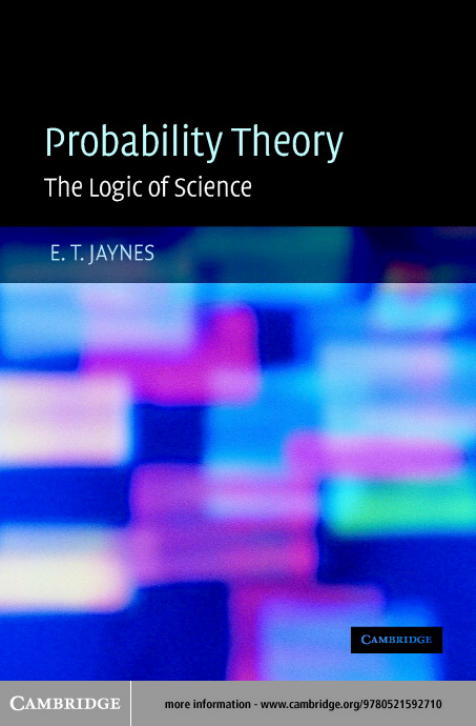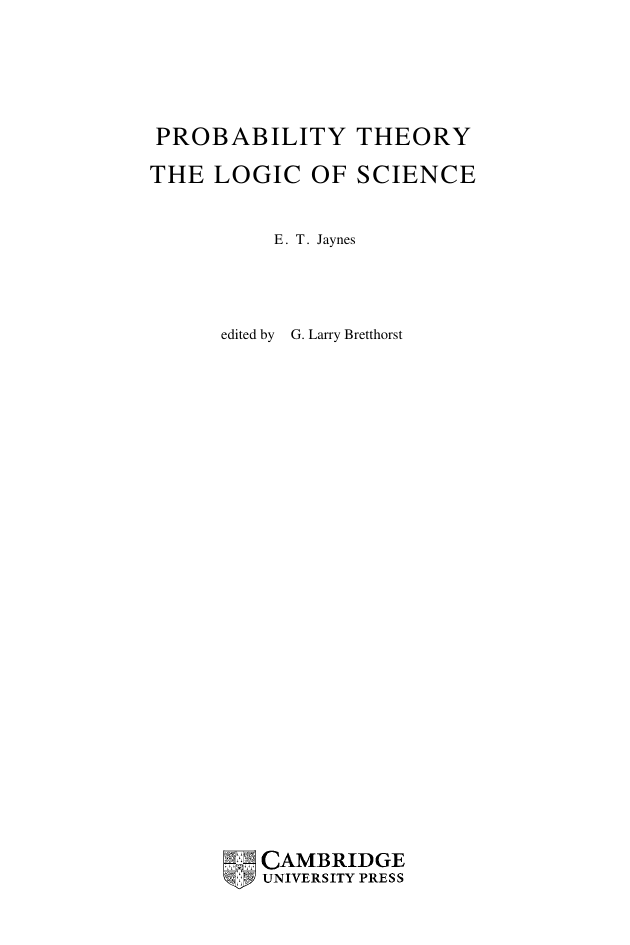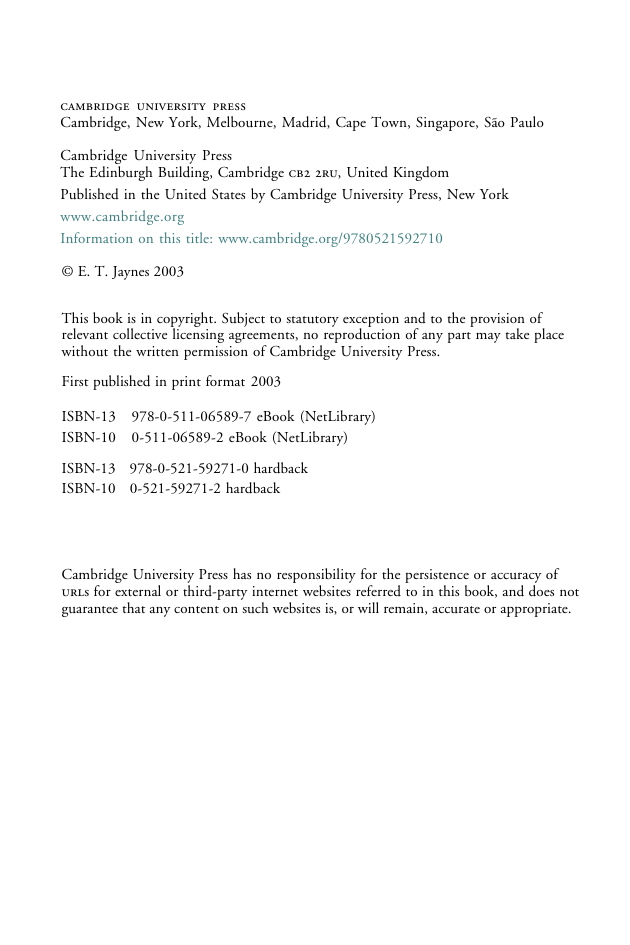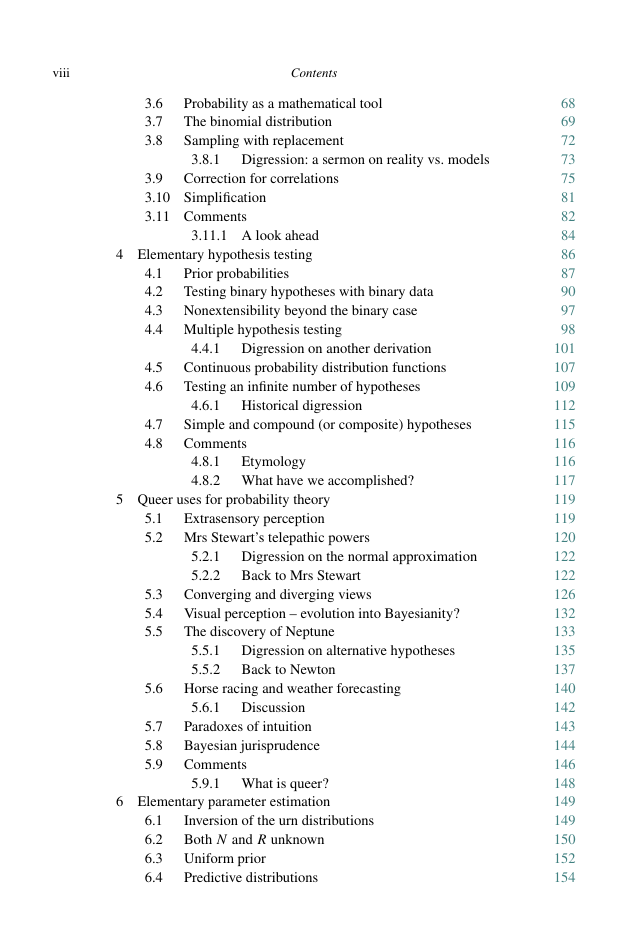Title Page
Contents
Editor’s foreword
Preface
Part 1 Principles and elementary applications
1 Plausible reasoning
2 The quantitative rules
3 Elementary sampling theory
4 Elementary hypothesis testing
5 Queer uses for probability theory
6 Elementary parameter estimation
7 The central, Gaussian or normal distribution
8 Sufficiency, ancillarity, and all that
9 Repetitive experiments: probability and frequency
10 Physics of ‘random experiments’
Part 2 Advanced applications
11 Discrete prior probabilities: the entropy principle
12 Ignorance priors and transformation groups
13 Decision theory, historical background
14 Simple applications of decision theory
15 Paradoxes of probability theory
16 Orthodox methods: historical background
17 Principles and pathology of orthodox statistics
18 The Apdistribution and rule of succession
19 Physical measurements
20 Model comparison
21 Outliers and robustness
22 Introduction to communication theory
Appendix A Other approaches to probability theory
Appendix B Mathematical formalities and style
Appendix C Convolutions and cumulants
References
Bibliography
Author index
Subject index
















 2023年江西萍乡中考道德与法治真题及答案.doc
2023年江西萍乡中考道德与法治真题及答案.doc 2012年重庆南川中考生物真题及答案.doc
2012年重庆南川中考生物真题及答案.doc 2013年江西师范大学地理学综合及文艺理论基础考研真题.doc
2013年江西师范大学地理学综合及文艺理论基础考研真题.doc 2020年四川甘孜小升初语文真题及答案I卷.doc
2020年四川甘孜小升初语文真题及答案I卷.doc 2020年注册岩土工程师专业基础考试真题及答案.doc
2020年注册岩土工程师专业基础考试真题及答案.doc 2023-2024学年福建省厦门市九年级上学期数学月考试题及答案.doc
2023-2024学年福建省厦门市九年级上学期数学月考试题及答案.doc 2021-2022学年辽宁省沈阳市大东区九年级上学期语文期末试题及答案.doc
2021-2022学年辽宁省沈阳市大东区九年级上学期语文期末试题及答案.doc 2022-2023学年北京东城区初三第一学期物理期末试卷及答案.doc
2022-2023学年北京东城区初三第一学期物理期末试卷及答案.doc 2018上半年江西教师资格初中地理学科知识与教学能力真题及答案.doc
2018上半年江西教师资格初中地理学科知识与教学能力真题及答案.doc 2012年河北国家公务员申论考试真题及答案-省级.doc
2012年河北国家公务员申论考试真题及答案-省级.doc 2020-2021学年江苏省扬州市江都区邵樊片九年级上学期数学第一次质量检测试题及答案.doc
2020-2021学年江苏省扬州市江都区邵樊片九年级上学期数学第一次质量检测试题及答案.doc 2022下半年黑龙江教师资格证中学综合素质真题及答案.doc
2022下半年黑龙江教师资格证中学综合素质真题及答案.doc